See The Beauty of Seoknamsa Temple in Ulsan
Last Updated on September 22, 2023
Seoknamsa Temple (석남사-울산) sits on the southern side of the Gaji mountain range in Ulsan, Korea and is one of the four major Buddhist temples of the Gajisan Provincial Park. Taking a break from our mountainside camping site on Munboksan Mountain recently, we went to this beautiful Korean temple in Ulsan to see something nearby. It was easily accessible and just gorgeous. Take a trip outside of Ulsan, Korea and see what you can see!
(This page contains affiliate links. That means if you click on them and purchase something, I will get a percentage of the transaction at no cost to you. Thanks for the support!)
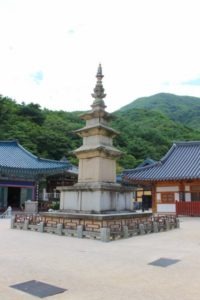
Basic Info
Address: 557 Seongnam-ro, Sangbuk-myeon, Ulju-gun, Ulsan (울산광역시 울주군 상북면 석남로 557)
Hours: 8:00am ~ 5:00pm
Admission: Adults: W1,700; Teenagers: W1,300; Elementary Students to Teenagers: W1,000; Younger: Free
Amenities: parking, bathrooms, small shop, easily accessible for families with small children

History Of The Temple
The Seoknamsa Buddhist temple was originally built in 824AD by monk Master Doui. Of course, as many temples were, this temple was destroyed during the Japanese Invasions between 1592 and 1598 and was subsequently rebuilt in 1674 by Zen Masters Takyoung and Sunchol. Currently, there are 30 buildings on the premises, some of which are not open to the public as this is a major temple for Buddhist nuns to reside and practice asceticism.
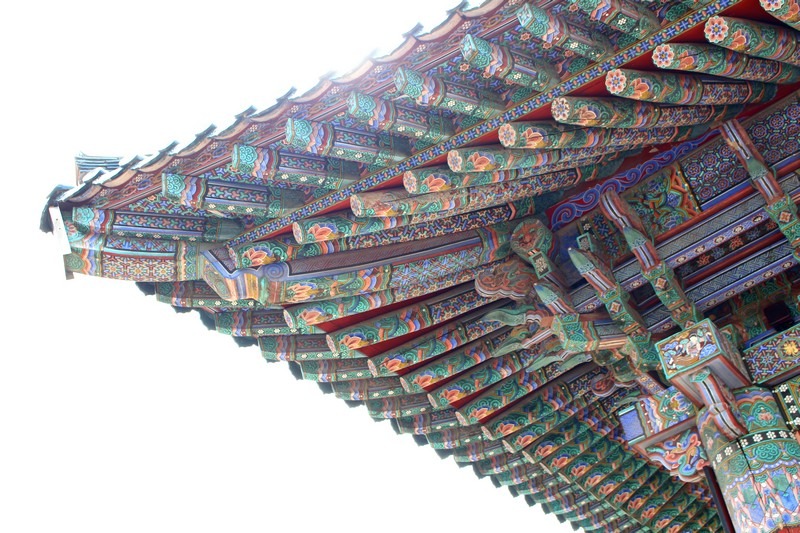
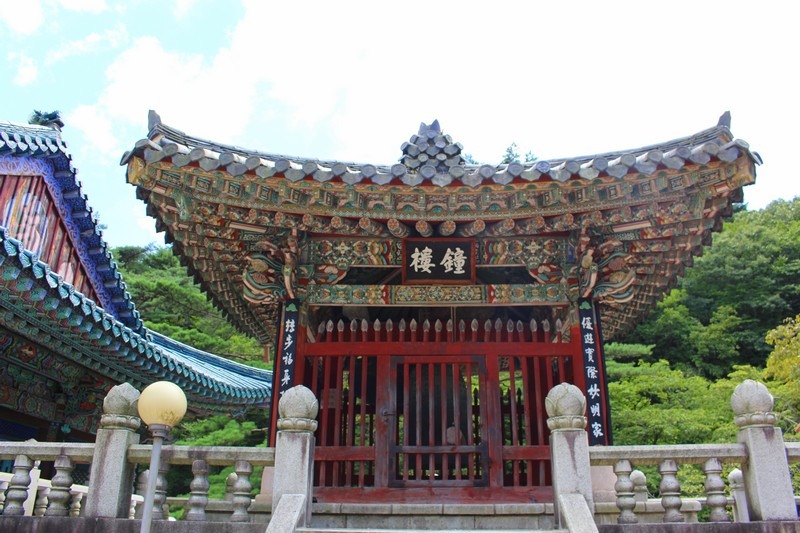
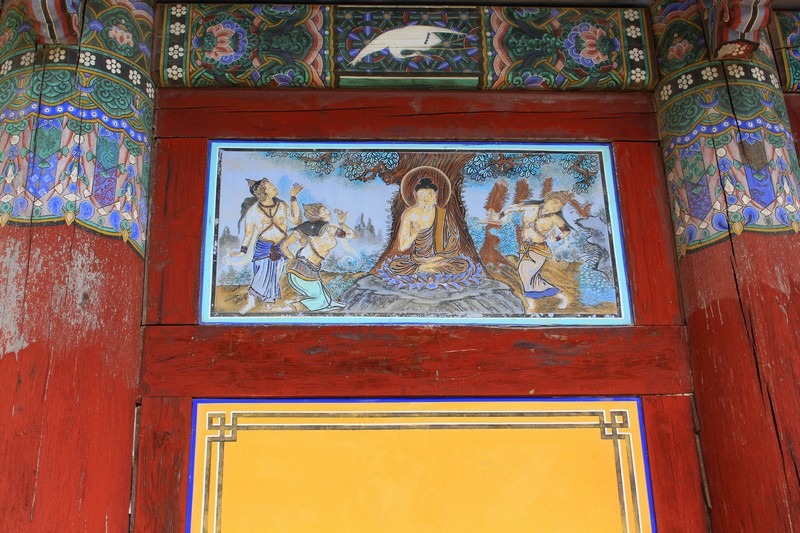
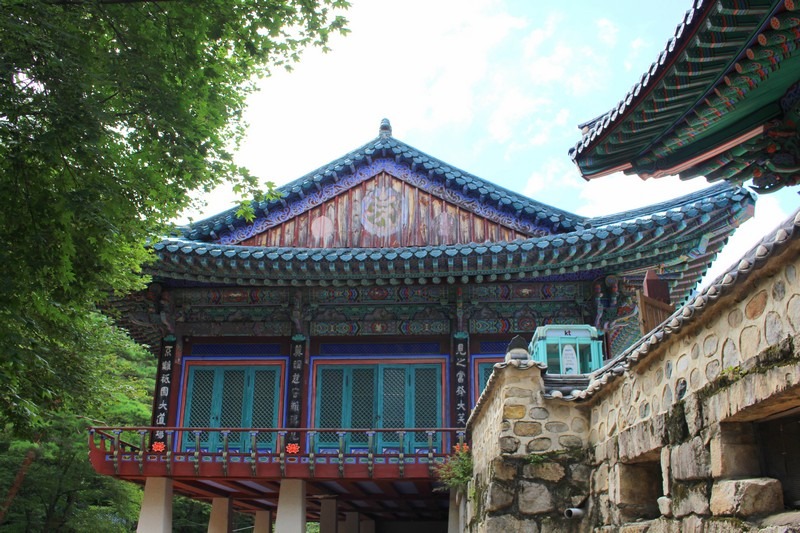
After purchasing a ticket, you’ll come to the Iljumun gate, the entrance to a gorgeous forested path. A canopy of trees above follows along a stream leading you up to the temple. About a 10 minute walk brings visitors to the temple with bridges on either side bringing visitors across the stream to the colorful temple walls.
The doors that welcome visitors into the temple are interesting in that they don’t have the common paintings of guardians but instead have large Sanskrit circles helping to rid visitors of bad karma according to my go-to Korean temples expert, Dale Quarrington. At the center of the entrance doors is the Buddhist sign for enlightenment and the Buddhist Wheel of Life.
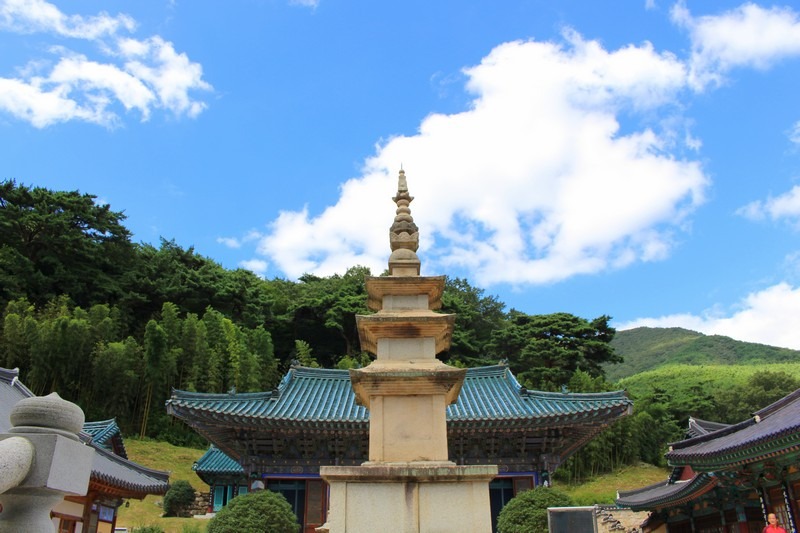
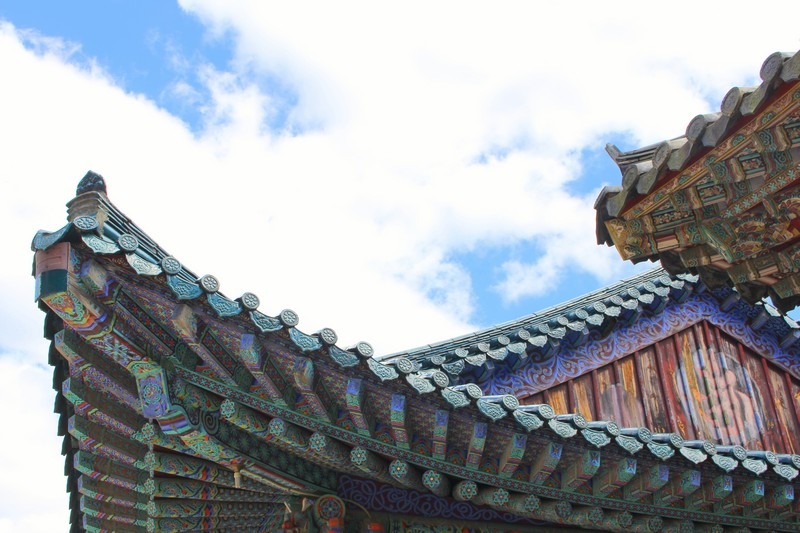

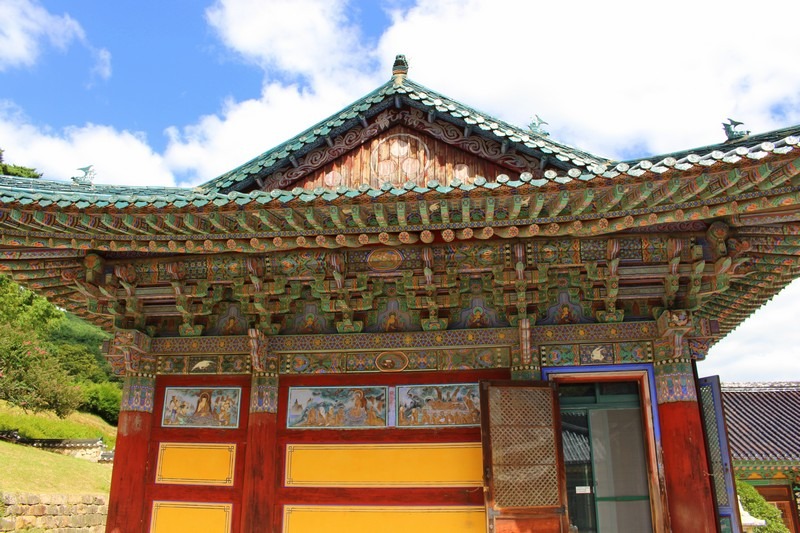
One of the highlights of the temple is the Three Story Pagoda, or Seokgomoni Pagoda, in the center courtyard which was built in 824AD. Monk Doui resurrected this pagoda with the hope that it would help protect his country from foreign invasions. While it may not have worked, it still is a beautiful sight and begs everyone to take a breath, take a seat and experience the calm of the grounds they’re about to explore. The pagoda was actually destroyed during the Japanese invasion in 1592 but was restored in 1973 by Monk Inhong.
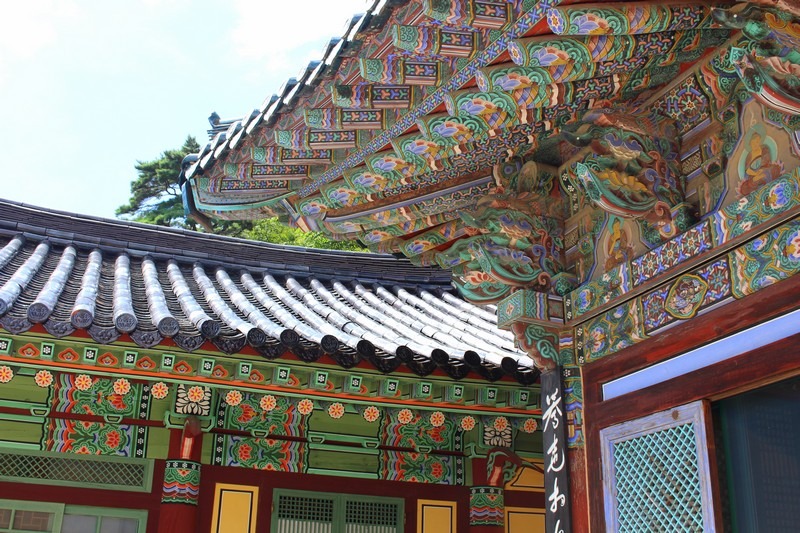
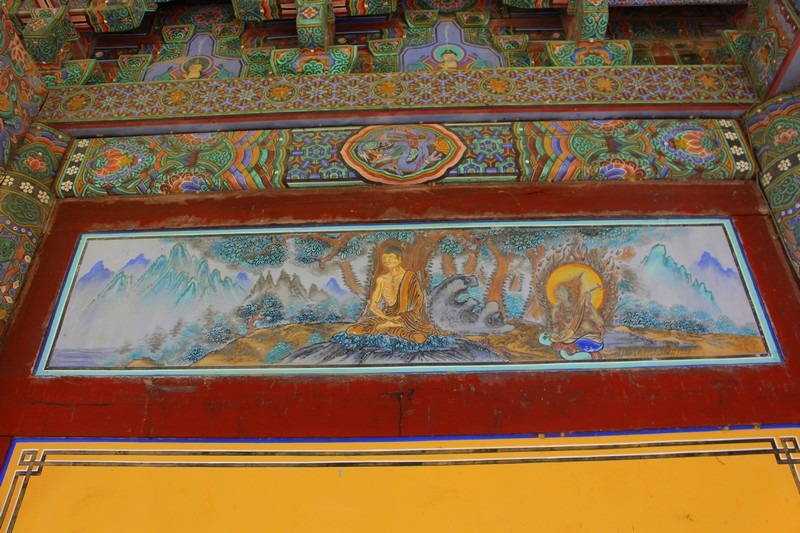
Wonder what all of the colors on a Korean Buddhist temple are for? Wonder what they symbolize? Learn more about dancheong before you go so you can really appreciate everything that you’re seeing at Seoknamsa Temple
Behind the temple is the main hall, Daengjeon or the “Great Hero Hall”. This hall is painted with the Eight Scenes of the Historical Buddha’s Life. You should definitely walk around the entire exterior to see them all. I love walking around the temples to see the depictions. They’re all so different and so intriguing.



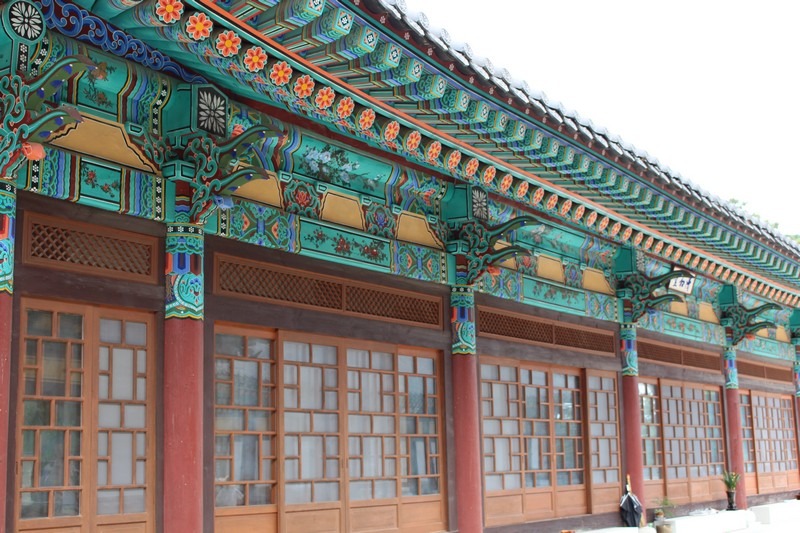
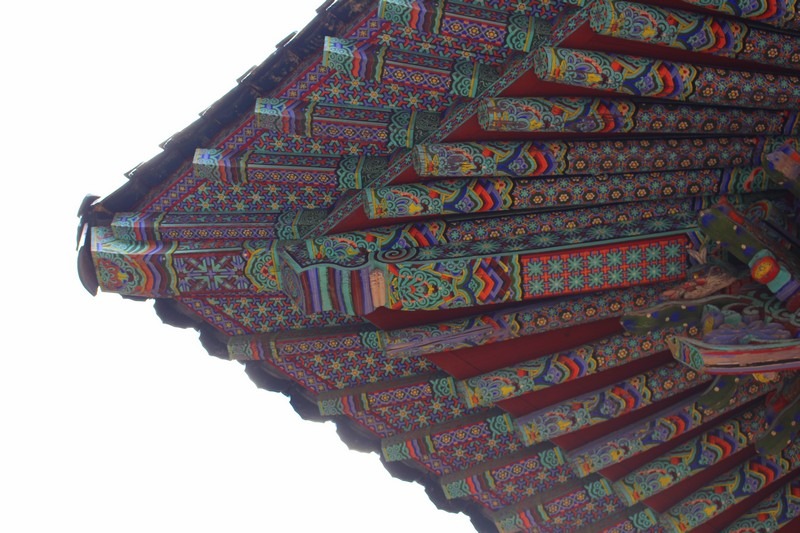

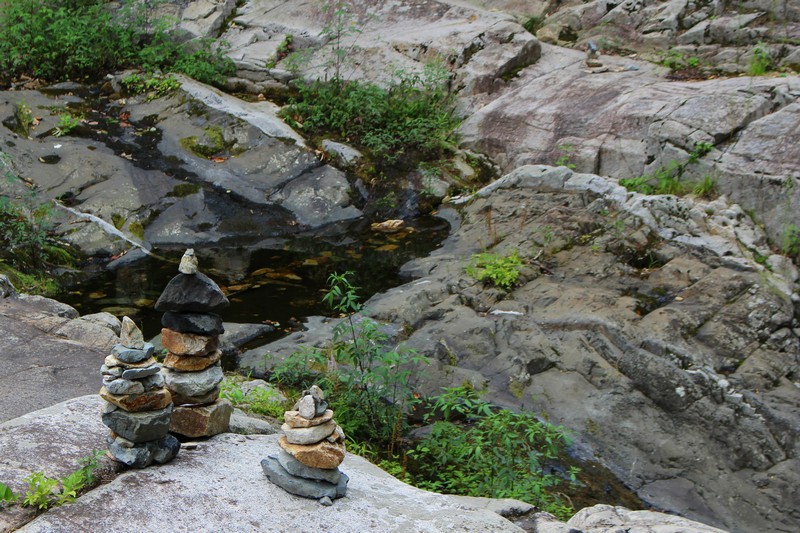

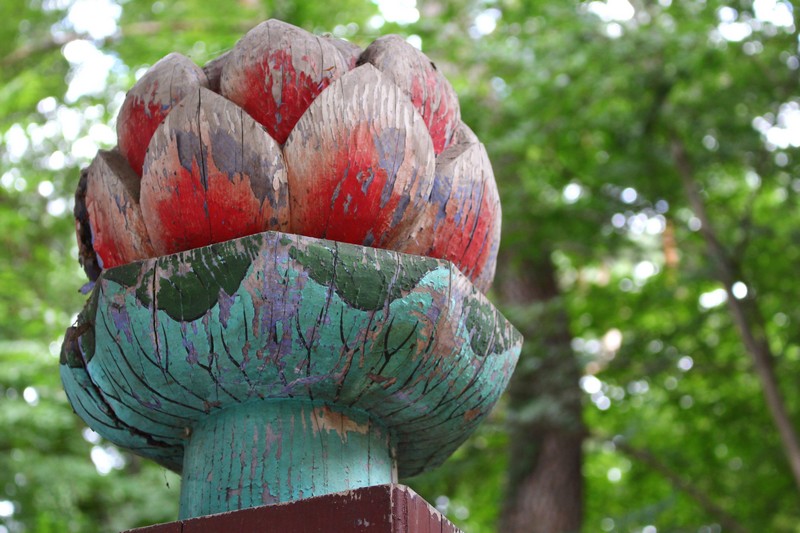
The area to the right of the main hall is off limits to visitors as the nuns reside there, but the buildings to the left are open for peering eyes to see. A stupa behind the main hall contains the remains of the founding monk, Doui, and sits above the rest of the grounds providing a good vantage point for the temple grounds and the mountainous area surrounding the colorful temple.
Did you like this post? Pin It!
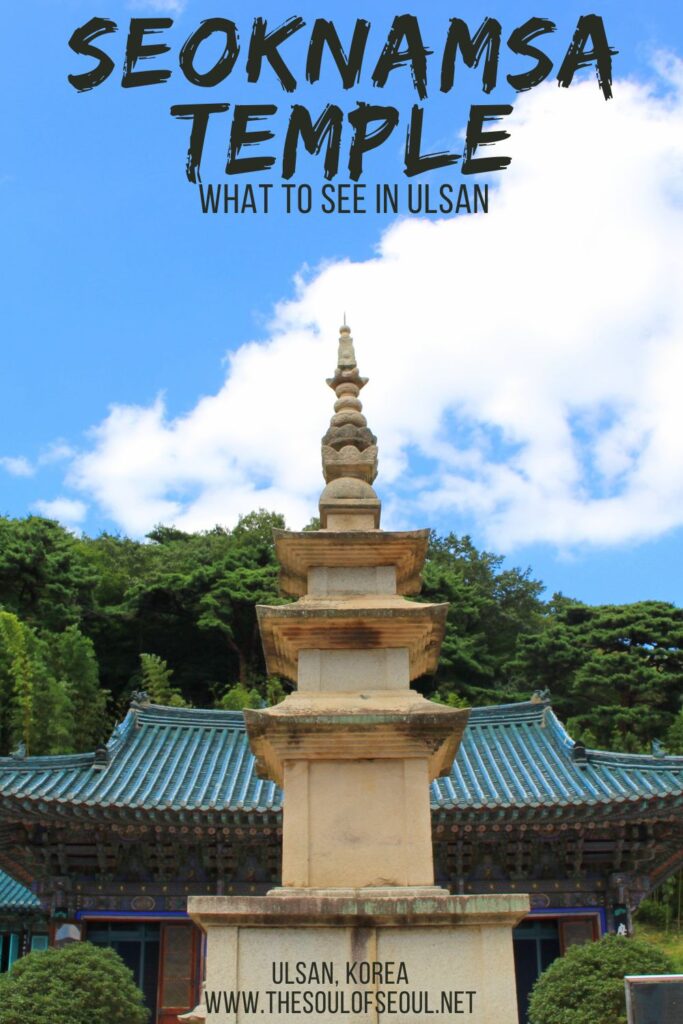
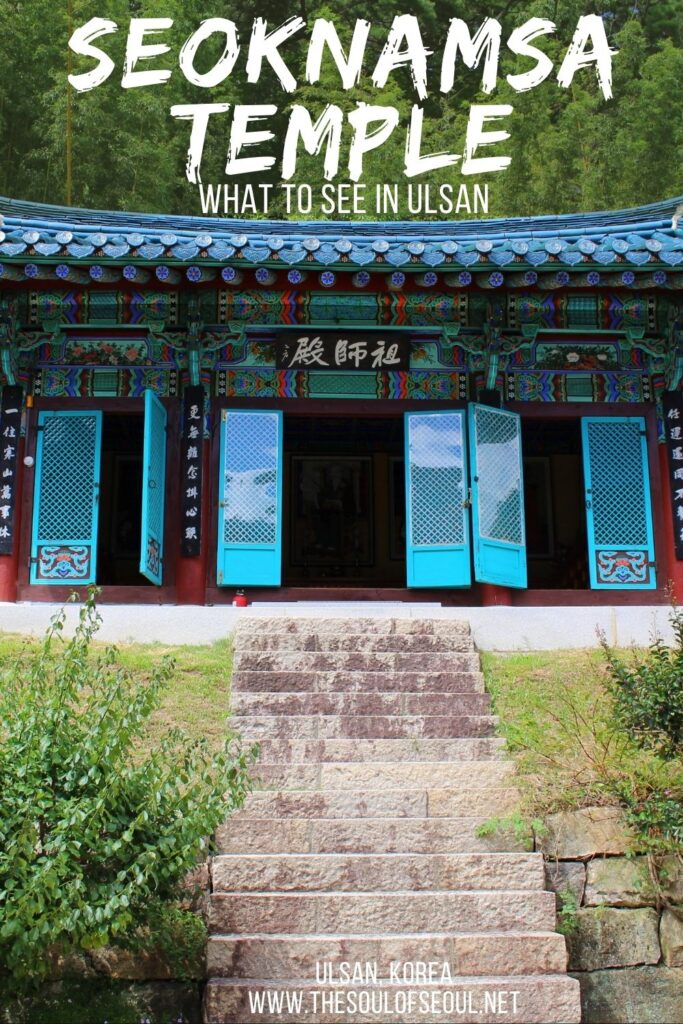

6 Comments
MORGAN Brigitte
Thank you: great pictures + useful comments.
WhereMonicaGoes
South Korea is one of the countries included in my list for next year. It really is simply amazing. The beautiful, colorful, and intricate designs of the temples, especially its roofs are amazing. Thank you for showing us beautiful glimpses of South Korea, particularly Ulsan.
Hallie
I hope you can make it here! Spring is my favorite time of the year. If you can come around Buddha’s Birthday, you’ll love it. ^^
Kerri
I haven’t spent a lot of time visiting these kind of temples in Asia so found this really interesting. I can’t believe the level of detail, colour anad intricacy of the artwork. That photo you have showing the underside of the roof is just incredible. Thanks so much for your detail in this article, I found it fascinating.
Nathan
S Korea is one of the few Asian countries I’ve yet to visit but I hope to go next year! I’ll have to keep your website in mind for when I do go.
Suma Jain
The intricate details on the ceiling is breath-taking. Such fine and colourful artwork on every corner of the temple!!